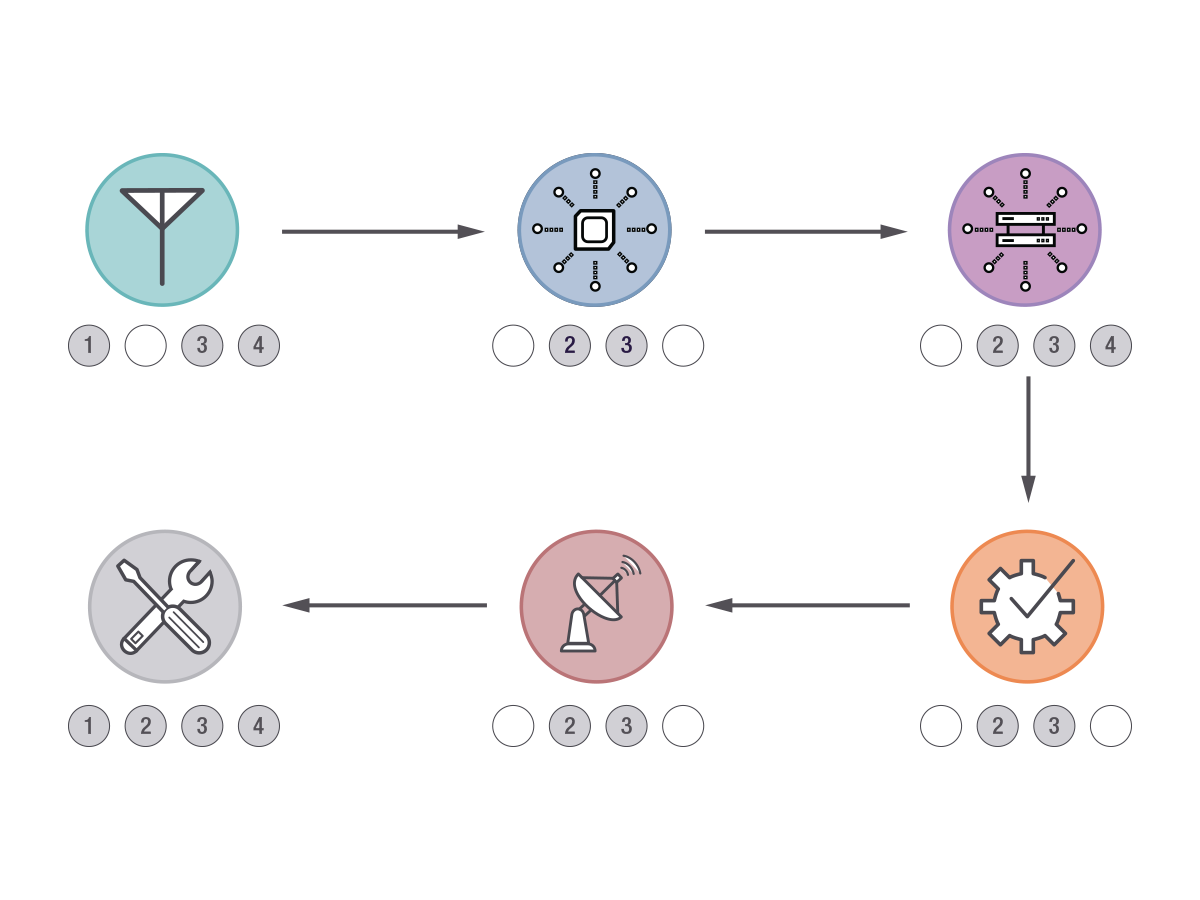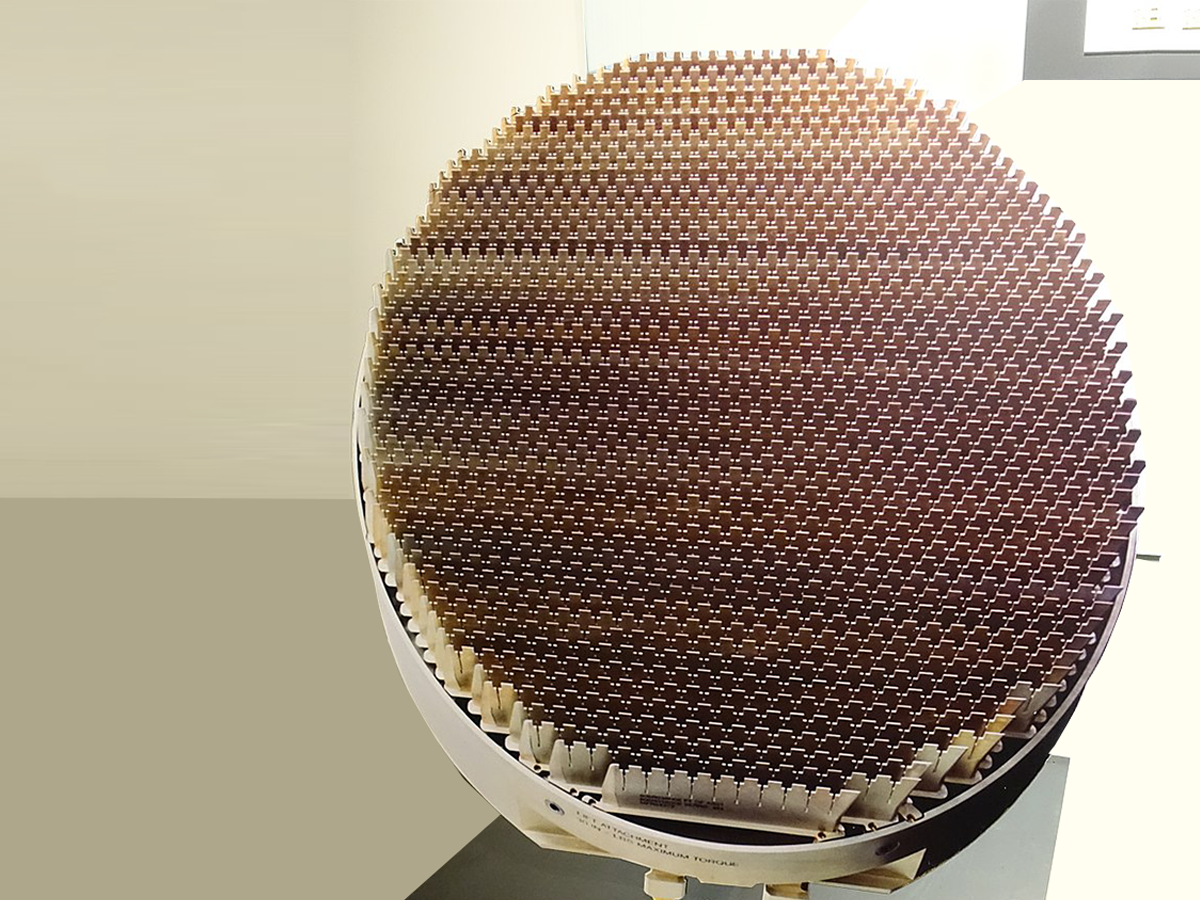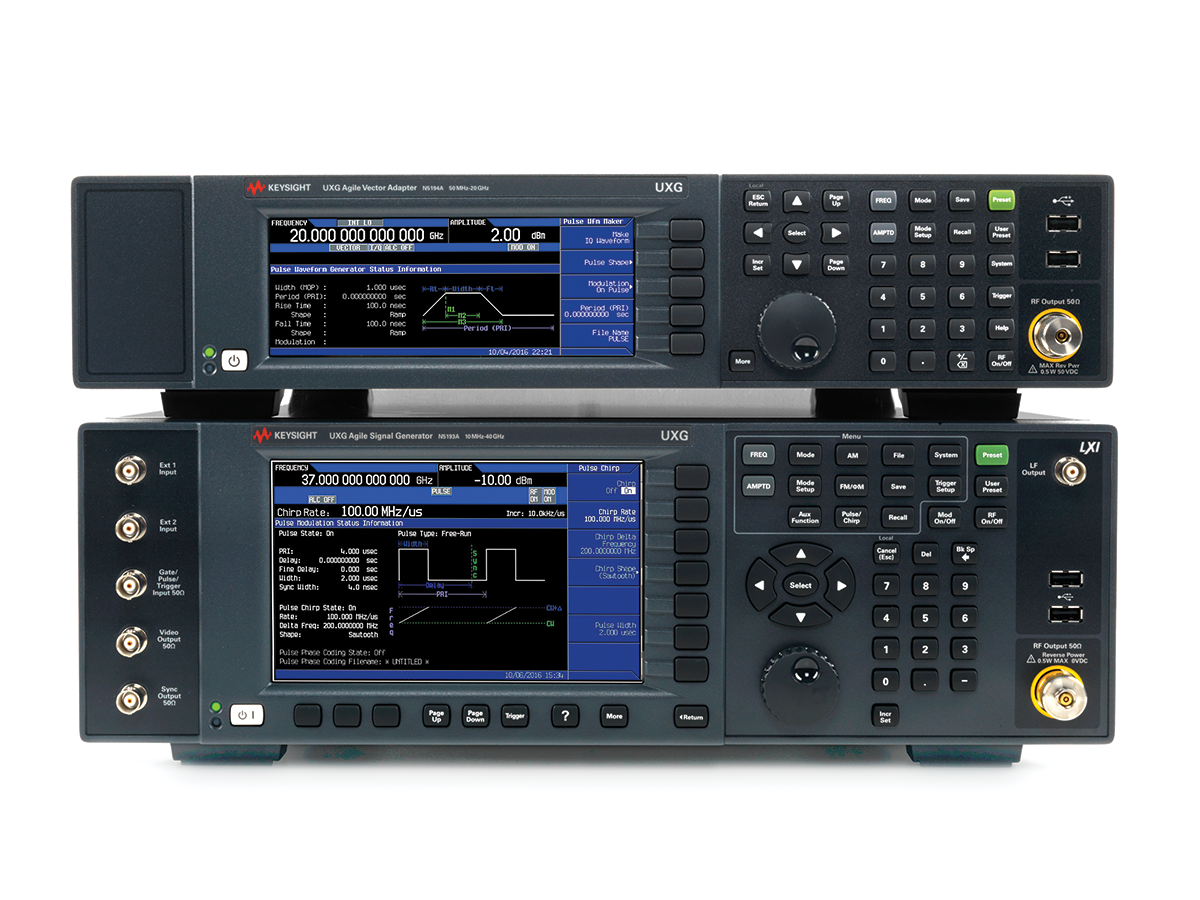What are you looking for?
Radar
Address all phases of your radar system workflow
As in commercial electronics and communications, the evolution from purely analog designs to hybrid analog/digital designs continues to drive advances in capability and performance. In radar systems, frequencies are increasingly agile. Signal formats and modulation schemes — pulsed and otherwise — continue to grow more complicated, and this demands wider bandwidth. Advanced digital signal processing (DSP) techniques are used to disguise system operation and to avoid jamming.
Architectures such as active electronically steered arrays (AESA) rely on advanced materials such as gallium nitride (GaN) to achieve greater performance in beamforming and beamsteering. Keysight has solutions to address all phases of developing a radar system from design to installation and verification.

Radar System Test Workflow
Below are the primary steps to test each phase of the radar system:
- TR Module / Antenna / Component
- Radar DSP/FPGA Development
- Sub-System Integration
- Radar Deployment
- Radar Range Test, Antenna
- Hardware-in-the-loop (HIL) Test
- TR Module and Antenna Test
- Radar Emulation
- Target Simulation
- Component Test
Antenna and Transmit-Receive Module (TRM) Test
AESA phased array antennas can synthesize thousands or hundreds of thousands of antenna patterns to provide high-performance, capability, and flexibility. Characterizing hundreds of thousands or even millions of antenna patterns is time-consuming. Using a fast source and receiver is a significant benefit to overcome these challenges. Keysight’s portfolio of simulation, antenna test, and TR module test solutions offer a unique blend of capability, speed, and accuracy that will reduce your test costs.


Radar Target Simulation
Newer radar test system requirements are driving wider bandwidths, more channels, phase coherency, and lower latency. The window of time to test radars to combat new threats is drastically shrinking. It’s critical to adopt a flexible, commercial off-the-shelf (COTS) architecture to solve modern radar target simulation needs. The cost of acquiring deployable components to create a radar target simulator might be low, but the high cost of self integration, calibration, time, effort, and accuracy to develop the appropriate target simulator tests increases the total solution cost.
Purchasing a specific, custom radar target simulator may seem like a worthwhile investment given the lower development costs, but costs associated with the creation of the DSP and integration of all the necessary hardware is high. Using newer test and measurement equipment, like the Keysight M3302A, provides a flexible platform that you can develop immediately with minimal integration time/costs.
Radar Emulation
Modern radar signals are agile in frequency and amplitude and are more complex as TRM and antenna technology improves. This complexity is an issue for realistic EW simulation. Simulating radar signals in a comprehensive software utility and verifying using COTS hardware is necessary to test your designs more efficiently. Tools like the Keysight’s SystemVue W1905EP Radar Model Library supports many different parameters to most accurately depict your Radar signal. This includes: antenna and scan patterns, modulations, modes and support for other advanced systems such as UWB, SAR, phased array, and MIMO.


Installation and Verification
The radar is the essential element in any aerospace/defense communication system. However, testing radars in the field is challenging due to the multitude of instruments that engineers and technicians are required to carry. Additionally, handheld products traditionally lack the performance necessary to measure pulsed signals; and field measurements typically do not correlate with those taken using laboratory instruments.
Carrying precision into the field is the key driver behind Keysight’s FieldFox analyzers. FieldFox analyzers allow you to take a single instrument into the field to verify and measure radar pulse characteristics, S-parameters, spectrum analysis, transmitter power, real-time spectrum analysis, noise figure, and more. Moreover, all measurements made with FieldFox are consistent with those of benchtop analyzers.
Related Products
Want help or have questions?






